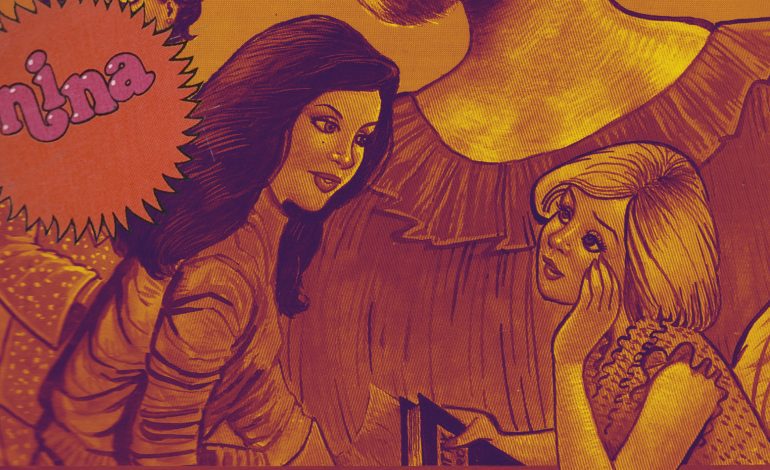Retro Plezier Met Nina (Why the 1970s Dutch Comics Kick Ass)
Remember that European Dutch comics series Nina? Turned out the comics were much cooler than their Japanese or American counterparts. For one, their female characters kick ass, this guy tells you why.

That’s the only Dutch you will read from me. Eerlijk.
Indonesian children and teenagers in the 1980s read plenty of European comics. This was a time when the Indonesian elites still could read Dutch, when university students went to (West) Germany, and when Indonesian publishers had yet to touch Japanese and American comics.
My cousin and sister bought plenty of European comics, usually set in Netherlands, France and the United States. Unlike Japanese and American comics that have very long plots divided into several (10-200) volumes, European comics were episodic like a TV series. Bad guys make trouble, heroes hunt them down, heroes get caught and escaped, heroes defeat bad guys, heroes laugh with each other. Repeat. Certainly many of them were inspired by English and American TV series and James Bond movies.
Mom regularly bought Nina weekly comics for Sis. The story is always one shot, featuring different heroines. The title always introduces the heroine’s first name (none of them is Nina), and some of them are still commonly names in Indonesia, like Inge, Tina, or Evie. A local artist summarizes the plot and main characters with the cover art.
Luckily my family kept neat archives of our old magazines and bundled them into hard cover books (many households did that in late 20th century). Of course, I hardly touched those girls’ comics, but recently I did.
Nina’s stories spanned across genres, such as drama, adventure, horror, and comedy. With few exceptions, they are set in modern Holland. Each story is 46 pages long (some editions feature 2 shorter stories) and always concludes happily.
For this adult male, Nina is an entertaining reading for many reasons. Over the last ten years I read plenty of Japanese comics targeted for female readers and there are glaring differences between them and Nina.
Many non-fans would say that manga art style is “unrealistic”, with big eyes, light hair color, and Western facial features for Japanese characters. As a longtime manga fan, I agree with the judgment, while arguing that while Japanese comics for boys move from realistic style to unrealistic over decades, comics for girls might move the other way around.
Nina comics, on the other hand, are drawn realistically. You can picture the characters as real life Dutch teenagers and young adults immediately.
Second, the one shot stories mean easier commitment. Following a Japanese series requires some loyalty; even if you read the online scans instead hoping that your local bookstore (e.g. Gramedia or Kinokuniya) would kindly provide the complete edition. One reason why I’m not interested in American comics is because the series never ends.
Third, Nina’s girls kick ass. They often start the story with terrible lucks. In several cases they are orphaned. Many come from working class or poor families. But whatever their hair color or hairstyle is, they are resourceful and tough. Many heroines of Japanese girls’ comics shed tears over being single, but when Nina’s heroine sees her father is dragged away at gunpoint, she evades capture, finds out who the baddies are, and makes her way to the police station (with the help of the helpful hunk). No time to freak out.
Finally, Nina’s stories are set in more realistic settings than its American and Japanese competitors. I’m pretty tired of Japanese stories about a girl’s school with personal butlers or a lover living with a rare and incurable disease (for the ‘doomed romance’ device instead of highlighting the lives of people living with rare diseases). Heroines of Nina can outwit their rivals and foes not because of mutant powers, but because, oh, they just happen to be trained gymnasts, magicians, or actors.
Who is behind this wonderful series? The first page of each edition cites Oberon BV as the original publisher but not much is known outside Holland about it. I’m sure the authors are different for each issue and there must be several different artists. The Indonesian issues were published in mid-1980s and the stories were said to be set at that time, although the dresses and hairstyles were unmistakably 1970s (long hairs, bellbottom jeans, leisure suits, liberal displays of facial hairs on men).
Girl-on-girl rivalry is common, sometimes between sisters. While the sisters (often separated at birth) will end up being friends, in other stories one shall be thrown into the swimming pool, or even killed (don’t worry, she’s a ghost to begin with). Second, there is no The One. Peggy and Jeroen make a cute couple, but Peggy may finish her mad adventures without cuddling Jeroen. On the other hand, the strongest bond is usually between the heroine and her partner-in-crime, whether it is her bestie, her father, or her dog.
Despite its easy endings (sometimes the lost parents are found because the narrator says so), Nina breaks the conventions of female fiction. I don’t need a boyfriend; I need to win this tennis trophy. I am an apprentice mechanic and I want to be a model. The heroines ride bikes, work as papergirls, and jump over roofs page after page, it’s redundant to classify them as tomboys.
Unfortunately, there’s a drawback of the one-shot format – you won’t see these interesting girls again next time. And yeah, the heroines are always white and while some of the boys have darker skins (including the ghost of a Banten prince), there is no black or Asian bestie.
It’s sad to think that in the Netherlands itself, by the time Indonesian girls were reading Nina, the series was already over. American girls’ comics were a 1970s fad, and as far I know they dealt mainly with romances instead of personal goal and adventure. Even as I re-read Japanese girls’ comics that are more grounded on daily life (called ‘slice-of-life’ genre), I keep wishing that these Japanese girls would be as brave and energetic as their Dutch sisters from Nina.













